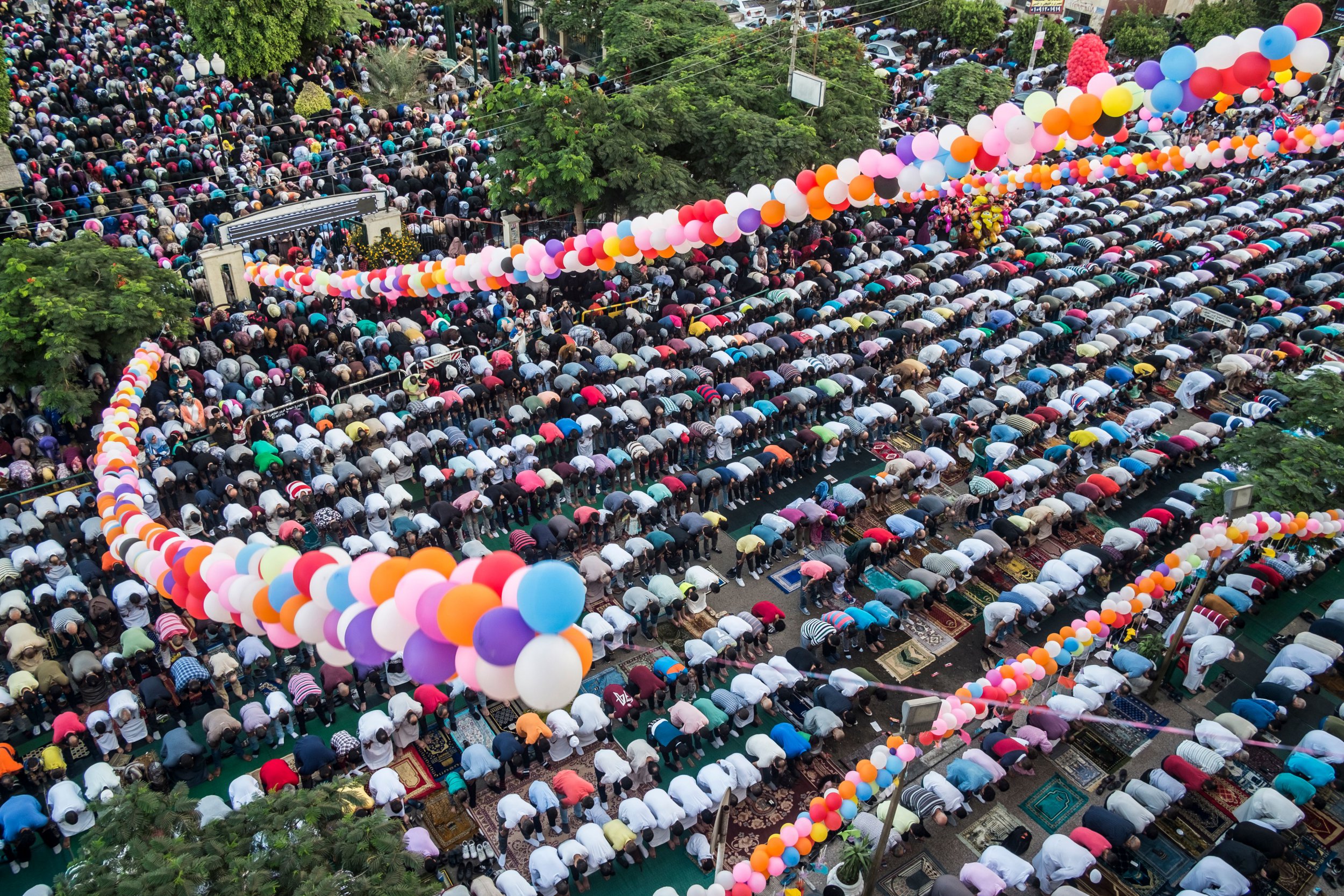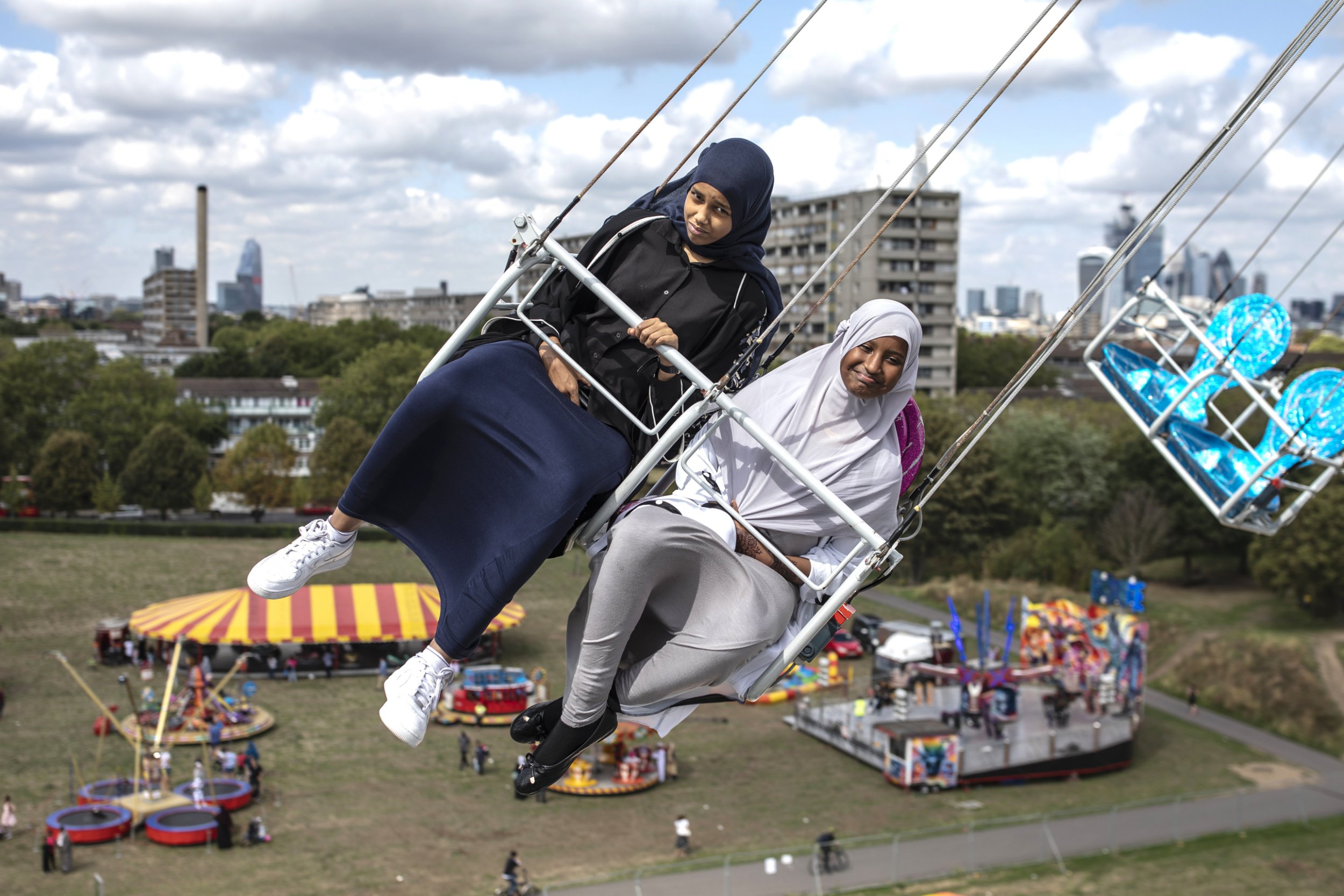Eid al-Adha falls this week, with Muslims hoping to find a way to celebrate despite the coronavirus restrictions in place around the world.
The Covid-19 pandemic meant that the earlier Eid festival, Eid al-Fitr, was a drastically different affair to usual, as was the holy month of Ramadan.
This week’s Hajj pilgrimage was also severely restricted, with only a “small and very limited” number of worshippers able to make the journey to Mecca in Saudi Arabia.
However Eid al-Adha is commemorated, families and friends will take the opportunity to wish each other the familiar “Eid Mubarak”, even if it’s over Zoom rather than in person – and here’s what the traditional greeting means.

What does ‘Eid Mubarak’ mean?
“Eid Mubarak” is the traditional phrase used by Muslims to greet each other during the Eid al-Adha and Eid al-Fitr celebrations.
The Arabic word “mubarak” translates as “blessed,” while “Eid” means feast, festival or celebration, so “Eid Mubarak” can literally mean “blessed celebration” or “blessed feast”, although it is widely interpreted as simply wishing somebody a “happy Eid”.
In exactly the same way, Muslims will often wish their fellow observers “Hajj Mubarak” during the pilgrimage or “Ramadan Mubarak” at the start of the holy month and throughout the fasting period.
“Ramadan Kareem” is less commonly used during the month, but translates as “Generous Ramadan” – while the phrase can be used as a greeting in a similar way to “Ramadan Mubarak”, it can also describe Ramadan when referring to it in a wider context.

There is some debate around whether using “Ramadan Kareem” is appropriate, given that the expectation of generosity can be considered against the principles of fasting and prayer central to observing the holy month.
However, others argue that the greeting can appropriately refer to the generosity of acts towards others. Khaled Boudemagh, described by Gulf News as a Dubai-based language expert, said: “Ramadan is a month of generosity, therefore wish Kareem.”
Both “Mubarak” and “Kareem” are also given names in Arabic, which carry the same meanings as bestowed in the Eid and Ramadan greetings.
What is Eid al-Adha and why is it celebrated?
Otherwise known as the “Festival of the Sacrifice”, Eid al-Adha is considered the holier of the two Islamic Eid festivals.
It honours the famous story of the willingness of the prophet Ibrahim (known in the Christian Old Testament as Abraham) to sacrifice his son as an act of obedience to God’s command.
However, before Ibrahim carried out the heartbreaking request, God, known as Allah in Islam, produced a lamb for him to sacrifice instead.
To commemorate this, an animal is traditionally sacrificed and divided into three parts in an act known as Qurbani. One part of the sheep is given to the poor, one to the immediate family at home and one is reserved for relatives.

Some Muslims may give money to charity to give poorer families the chance to have a proper Eid feast. Mosques and community groups will often arrange communal meals.
Eid al-Adha falls on the tenth day of Dhu al-Hijjah, the twelfth month of the Islamic Hijri calendar. Because this is based on the lunar cycle, in the more commonly used Gregorian calendar, this date shifts from year to year, moving forward around 11 days annually.
The nature of the Hijri also means that it’s not possible to predict its date exactly – in 2020 it was predicted to begin on either Thursday 30 or Friday 31 July, lasting for four days.
According to Saudi Arabia, whose moon sighting lead is followed by many Muslims around the world, the new moon for Dhu al-Hijjah was not seen on Monday 20 July – this meant that the date for Eid al-Adha was confirmed for Friday 31 July.

